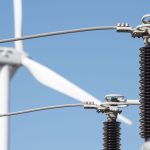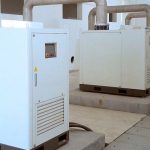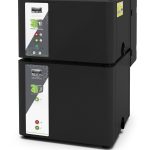Combustible gas detectors are a critical part of a fire protection system, but a key standard has very little to say on the topic. How can a company resolve this issue and remain in compliance? Emerson‘s Nick Pinto investigates…
Any process manufacturing plant handling large volumes of flammable liquid products or feedstocks must deploy a comprehensive strategy to prevent, detect, and fight fires. Such systems must be designed and installed by experts in compliance with applicable standards. This basic concept is in use every day, but becomes complex when the relevant standards are unclear or provide insufficient information. The expert and company must then fill in blanks, which may lead to misunderstandings and potential disagreements when the authority having jurisdiction inspects the system.
Are such situations still possible today? Could any detail still remain undefined after following standards for so many years in so many areas? The answer is yes, and here is a case in point: installing combustible gas detectors as part of a fire detection and suppression system. Let’s dig into this situation.
NFPA 72: National Fire Alarm and Signaling Code is normally used by system designers and inspectors in conjunction with NFPA 70: National Electrical Code. But an inspector wanting to evaluate use of combustible gas detectors has little to go on because NFPA 72, 17.10 Gas Detection is a very short section in the long chapter on initiating devices. How should gas detectors fit into the picture to ensure compliance?
Combustible Gas Detector Functions
A combustible gas detector looks for escaping gases (propane, methane, etc.) and vapours of flammable liquids (gasoline, ethanol, etc.), hopefully before they find an ignition source. There are several detection technologies, each with its own capabilities and designed to perform a specific type of task. When used in combination, they complement each other to provide thorough, overlapping detection coverage.
Fixed point combustible gas detectors are the most common (Figure 1) and use one of two sensor technologies. Infrared sensors respond to the specific light wavelengths absorbed by the vapour or gas. Catalytic bead sensors facilitate an internal chemical reaction in the presence of a variety of gases and vapors, both hydrocarbon- and nonhydrocarbon-based. Both technologies depend on a cloud with sufficient concentration drifting to the individual sensor. Fixed point detectors are usually deployed where there is a concentration of equipment, and therefore multiple potential release points.
Open path combustible gas detectors send a focused beam of infrared light from a transmitter to a receiver (Figure 2) to detect combustible gases moving through the beam. These cover a wider area than a fixed-point detector, and are therefore deployed like a fence around the perimeter of tanks and equipment clusters.
Ultrasonic gas leak detectors listen for the characteristic sounds made by pressurised gas leaks in frequencies above audible range (Figure 3). Using multiple piezoelectric sensors, they can respond very quickly. However, they respond to any pressurised gas, so they cannot differentiate between escaping propane and a compressed air leak, for example.
Minimalist Standard
An NFPA standard is not intended to be a design manual; however, it must provide sufficient information for an inspector to look at an installation and make an intelligent evaluation as to compliance. Presumably, inspectors have basic expertise, so the actual standard text serves primarily to clarify critical details. However, in the case of combustible gas detectors, NFPA 72, 17.10 is sparse by any measure, and since it has to apply to any conceivable facility from a shopping mall to a hospital to a refinery, it has to be very general.
Therefore, when applying it to a chemical processing plant, for example, there is not much to work with. All an inspector can check is if the detector itself is approved under ANSI/UL 2075, and that it is wired correctly. There is no comment on the number of detectors deployed, what type of detector, or where they are located. However, subsection 17.10.2.4 says, “The selection and placement of the gas detectors shall be based on an engineering evaluation.” This might prompt an inspector to ask to see said evaluation, with its contents subject to interpretation.
The Logical Conclusion?
So, where does this leave a company creating or evaluating a fire detection and suppression system? Here are a few key thoughts:
- The paucity of information on combustible gas detectors in NFPA 72 does not diminish the technologies’ capability or its importance in a comprehensive system.
- Without specific instruction, it is all the more important to consult with experts for detector selection and placement.
- The lack of clear standards can be an advantage since there are few constraints on technology selection. New detector advances can be adopted without having to wait for the standard to catch up.
Combustible gas detectors should be part of any larger fire prevention and suppression system because they are the critical protection layer able to identify when fuel is present but has not yet ignited. Stopping an incident’s escalation at this point makes all the difference.
References
1. Net Safety Millennium II SC310 Catalytic Bead Combustible Gas Sensor: https://www.emerson.com/en-us/catalog/net-safety-sc310-gas-sensor
2. Incus Ultrasonic Gas Leak Detector: https://www.emerson.com/en-us/catalog/rosemount-sku-incus-ultrasonic-gas-leak-detector



